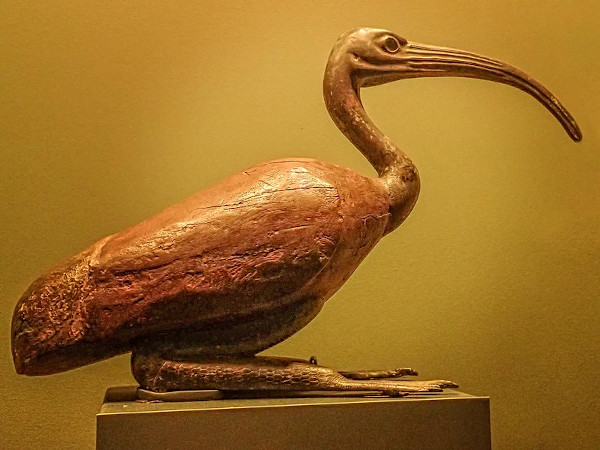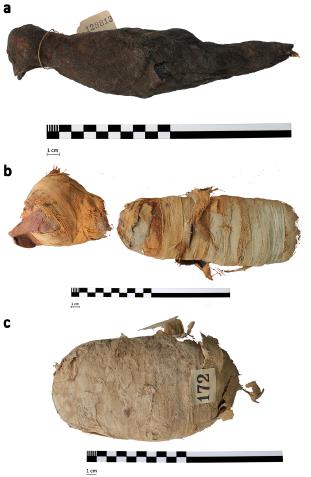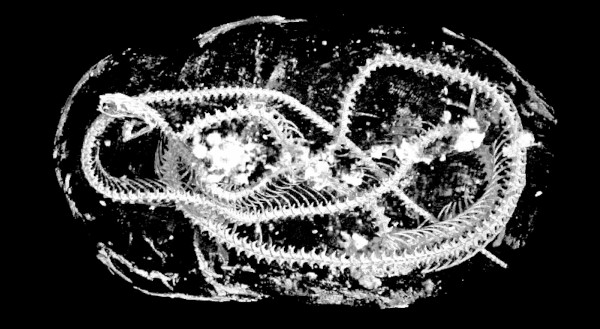The ancient Egyptians made literally millions of animal mummies, mostly between about 680 BCE–350 CE, the Late Period and Greco-Roman eras. In August 2020 British archaeologist Richard Johnston and colleagues published the latest in several decades of steadily improving scientific studies using a form of high-resolution x-ray. This Background Check examines the history of research into Egyptian animal mummies.


Egyptian archaeologist Salima Ikram divides the types of animal mummies used by ancient Egyptians into four groups: Beloved pets, living avatars of the gods, sacrifices to the gods, and food for the pharaohs. Although there is some overlap, different animals were used in the different categories, and the practices took place at different times over the length of the 3,500 years of the dynastic Egyptian civilization.
Excepting those collected by the odd tourist, animal mummies were not especially prized by collectors, however, and many ended up as fertilizer or fuel for fires.
Modern scholars use ever-increasingly enhanced x-ray and CT scans: the Johnston paper included quite high-resolution images such as this one of the cobra, which allowed the researchers to recognize the species, the way the cobra died, and the fact that it was not kept in particularly good health during its life.

Excavations uncovered many millions of ibis mummies in the Saqqara catacombs alone. This bronze and wooden coffin from the Late Period (332-30 BCE) was photographed at the Smithsonian National Museum of Natural History in Washington D.C. by Mary Harrsch in 2015.
The Johnston Study
Johnston and colleagues at Swansea University used high-resolution scanning techniques—laboratory-based x-ray microcomputed tomography and focused imaging—to look into three different animal mummies: a bird, a cat, and an oval package with an unidentified animal inside. Without opening or otherwise harming the wrapping, the team was able to ascertain that the bird was likely a Eurasian kestrel; the cat was a domestic kitten, aged younger than 18 weeks and purposefully strangled; and the oval mummy held an Egyptian cobra, which had been ill-treated before its death.Photographs of all three specimens and scale bars: a bird mummy, b cat mummy head and body, and c mummified snake. Credit: Swansea University
Types of Animal Mummies
Animals mummified by ancient Egyptians include dogs, cats, cows, donkeys, sheep, horses, monkeys and baboons, fish, lizards, crocodiles, ibises, gazelles, shrews, snakes, raptors, and even elephants. They were interred with their owners, as offerings in temples or pharaoh's tombs, or in one of several dozen animal cemeteries in Egypt. (By the way, Camille Berruyer and associates published a study of a complete crocodile mummy earlier this year; the report is freely available from PLoS ONE.)Egyptian archaeologist Salima Ikram divides the types of animal mummies used by ancient Egyptians into four groups: Beloved pets, living avatars of the gods, sacrifices to the gods, and food for the pharaohs. Although there is some overlap, different animals were used in the different categories, and the practices took place at different times over the length of the 3,500 years of the dynastic Egyptian civilization.
- Beloved pets were sometimes buried with their owners, at the time of the owners' deaths or afterward, in an outer chamber of the tomb. Pets are attested throughout Egyptian civilization, beginning as early as the predynastic period (5000-3000 BCE), although mummies are rare and don't appear until later. Dogs, cats, gazelles, baboons, monkeys: these were personal family members and treated as such.
- Food for the pharaohs were animals prepared as meats to act as the king's last dinner. Quadrupeds such as cows and gazelles were cut into joints; whole birds (ducks, geese, pigeons) were eviscerated, plucked, and beheaded before being cured with salt or natron, bandaged and sometimes dosed with vegetable oil in their coffins, ready to cook and eat. Most of these mummies were prepared for New Kingdom pharaohs (1550-1070 BCE), although there is evidence that the practice may have occurred as long ago as the Old Kingdom (2686–2160 BCE).
- Divine avatars were animals kept as stand-ins for gods and goddesses: for example, a cat represented Bastet, a bull represented Ptah and Osiris, a crocodile Sobek, an ibis Thoth, a ram Khnum, and a hawk as Horus. During their lives, these animals were kept in special stalls or cages near the deities' temples and brought presents and paid homage by a coterie of priests and pilgrims. On the animal's death they received the same treatment as an elite human, including a 70-day-long mourning period during which the animal was embalmed, then a state funeral complete with fasting. Divine avatars were popular during the New Kingdom, and then became part of an animal cult that arose in the Late Period and later.
- The largest category of mummies were votive sacrifices, prepared mummies sold by Late Period and Greco-Roman priests to pilgrims, to be placed in tombs or temples dedicated to a specific god. Cats and dogs, ibises, scarab beetles, and snakes were the most common types of votive mummies, although almost any species could be included, and many were likely mass-produced to meet the demand. A subset of votives are fakes—or more precisely ersatz—votives bearing a superficial likeness of an animal, but filled with animal parts or partial remains of one or more different species, or no remains at all. "Fakes" isn't an appropriate term, because scholars don't know what was the intent and it's possible that merely having been made by a priest made a votive mummy sacred. There is no reason an "ersatz" votive would be any less legitimate than one with a real, entire animal inside.
Where are They Now?
Animal mummies, particularly cats, were immensely popular with tourists—indeed in the 19th century if you didn't bring back an animal mummy, your friends didn't believe you were in Egypt at all. Today they are scattered in small regional museums around the world, although there are study collections at the University of Manchester and the Cairo museum and others, including examples excavated or collected by 19th- and 20th-century Egyptologists.Excepting those collected by the odd tourist, animal mummies were not especially prized by collectors, however, and many ended up as fertilizer or fuel for fires.
Mummy Studies
Studies such as the one made by Johnston and colleagues are in general conducted on the collections and investigated using primarily if not completely non-invasive methods. Non-invasive methods—studies that don't involve unwrapping the mummy—began with the invention of the x-ray: the first radiographs on mummies occurred in 1896, a few months after Wilhelm Conrad Roentgen discovered x-rays.Modern scholars use ever-increasingly enhanced x-ray and CT scans: the Johnston paper included quite high-resolution images such as this one of the cobra, which allowed the researchers to recognize the species, the way the cobra died, and the fact that it was not kept in particularly good health during its life.
High-resolution 3D scan of the mummy of an Egyptian cobra. Credit: Swansea University
Sources and Further Reading
- Atherton-Woolham, Stephanie et al. "Imaging the Gods: Animal Mummies from Tomb 3508, North Saqqara, Egypt." Antiquity, vol. 93, no. 367, 2019, pp. 128–143, Cambridge Core, doi:10.15184/aqy.2018.189.
- Berruyer, Camille et al. "Synchrotron 'Virtual Archaeozoology' Reveals How Ancient Egyptians Prepared a Decaying Crocodile Cadaver for Mummification." PLoS ONE, vol. 15, no. 2, 2020, p. e0229140, doi:10.1371/journal.pone.0229140.
- Buckley, Stephen A. et al. "Complex Organic Chemical Balms of Pharaonic Animal Mummies." Nature, vol. 431, no. 7006, 2004, pp. 294–299, doi:10.1038/nature02849.
- Ikram, Salima, editor. Divine Creatures: Animal Mummies in Ancient Egypt. American University in Cairo, 2005.
- Ikram, Salima. "The Loved Ones: Egyptian Animal Mummies as Cultural and Environmental Indicators." Archaeozoology of the Near East Xii: Proceedings of the Sixth International Symposium on the Archaeozoology of Southwestern Asia and Adjacent Areas, edited by H. Buitenhuis et al., ARC Publications, 2005, pp. 240–248.
- Johnston, Richard et al. "Evidence of Diet, Deification, and Death within Ancient Egyptian Mummified Animals." Science Reports, vol. 10, no. 1, 2020, p. 14113, doi:10.1038/s41598-020-69726-0.
- Lucejko, Jeannette et al. "Chemical Analyses of Egyptian Mummification Balms and Organic Residues from Storage Jars Dated from the Old Kingdom to the Copto-Byzantine Period." Journal of Archaeological Science, vol. 85, 2017, pp. 1-12, doi:https:10.1016/j.jas.2017.06.015.
- McKnight, Lidija M. et al. "Appearance and Reality in Ancient Egyptian Votive Animal Mummies." Journal of Ancient Egyptian Interconnections, vol. 20, 2018, pp. 52-57, https://egyptianexpedition.org/articles/appearance-and-reality-in-ancient-egyptian-votive-animal-mummies/.
- McKnight, Lidija M. et al. "Imaging of Ancient Egyptian Animal Mummies." RadioGraphics, vol. 35, no. 7, 2015, pp. 2108-2120, doi:10.1148/rg.2015140309.
- Richardin, Pascale et al. "Cats, Crocodiles, Cattle, and More: Initial Steps toward Establishing a Chronology of Ancient Egyptian Animal Mummies." Radiocarbon, vol. 59, no. 2, 2017, pp. 595-607, Cambridge Core, doi:10.1017/RDC.2016.102.
- Zesch, Stephanie et al. "From First to Latest Imaging Technology: Revisiting the First Mummy Investigated with X-Ray in 1896 by Using Dual-Source Computed Tomography." European Journal of Radiology Open, vol. 3, 2016, pp. 172-181, doi:10.1016/j.ejro.2016.07.002.